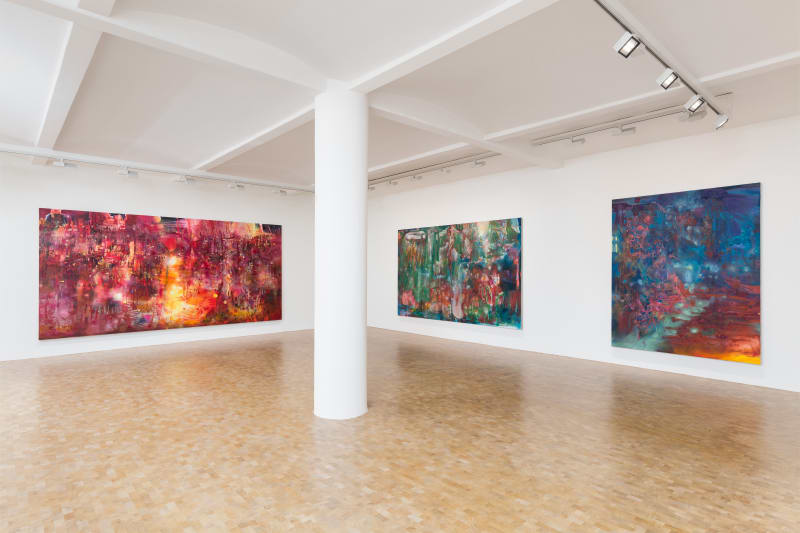In her multidisciplinary practice, Li Hei Di explores repressed desire and her own sexual identity. Painting forms the backbone of an oeuvre concerned with sensuality and infatuation, although sculpture and performance also play a key role. The eroticism of Chinese literature, music and cinema – including the written works of Mo Yan, Wang Xiao Bo and Yiyun Li – is of crucial significance to the artist’s work, which harnesses an Eastern attitude to sex and attraction, while also looking to Western literary sources, from Maggie Nelson and Virginia Woolf, to Ursula K. Le Guin. Li eschews rigid sexual codes and gender categories in favour of a liberated approach to fantasy and beauty, which exists apart from hierarchical and dominant social structures.
Exploring primal urges, her paintings capture seduction and flirtation in the fluid application of paint on canvas. Organic subject matter becomes abstract, submerged beneath painted veils or membranes. In Li’s painting different worlds co-exist; the dream-like spaces of her canvases are in constant flux, guided by desire and emotion. Multiple layers and perspectives collide and overlap, creating dynamic compositions that offer manifold realities in a single work.
Exploring primal urges, her paintings capture seduction and flirtation in the fluid application of paint on canvas. Organic subject matter becomes abstract, submerged beneath painted veils or membranes. In Li’s painting different worlds co-exist; the dream-like spaces of her canvases are in constant flux, guided by desire and emotion. Multiple layers and perspectives collide and overlap, creating dynamic compositions that offer manifold realities in a single work.
